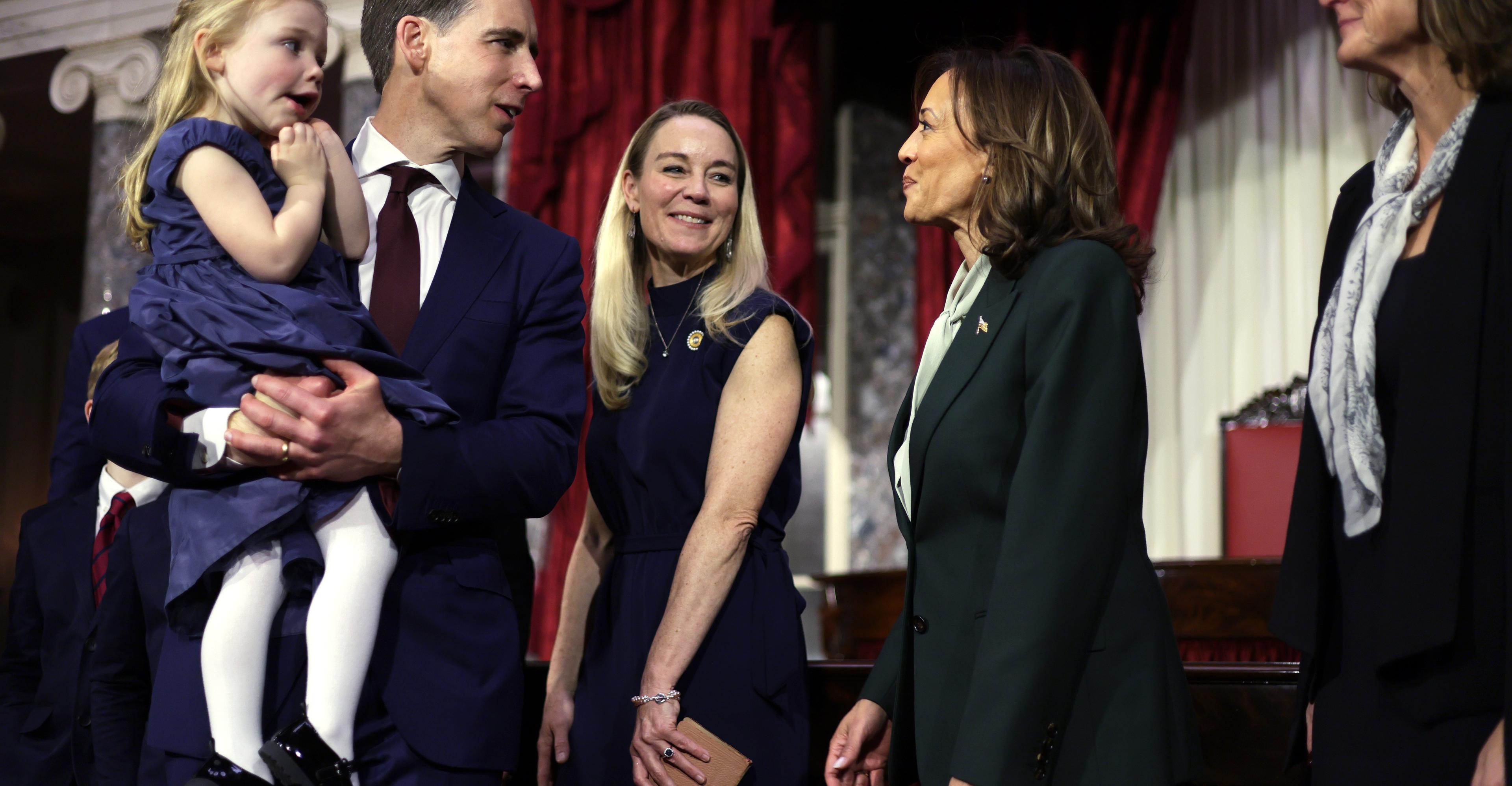Brittany Kjenaas and her husband live with their three-year-old daughter in northern Minnesota, paying more for child care than their mortgage. Kjenaas, a health care supply manager and her husband, a miner on the Iron Range, cite their daycare bills as the p…

Published 2 سال قبل on مئی 23 2024، 12:00 شام
By Web Desk

Brittany Kjenaas and her husband live with their 3-year-old daughter in northern Minnesota, where they pay more for child care than they do for their mortgage. Kjenaas, a health care supply manager, and her husband, a miner on the Iron Range, cite their day care bills as the primary reason they’ve abandoned plans to have any more children. “We waited until we were in our 30s to start a family and ... it’s not an exaggeration to say that the decision was based on the cost of child care,” she said. “She is our only child, and unless something changes in the cost of child care, she will remain our only child.” Kjenaas is not alone in speaking out about how the prohibitive cost of child care is shaping the reproductive decisions of middle-class families like hers, families that are ineligible for low-income child care assistance programs. In Minnesota, state Sen. Grant Hauschild has said that he and his wife considered having a third child but decided against it due to day care costs. It’s among the top three issues he hears about from constituents on a daily basis, as well as from prospective employers considering setting up businesses in his region. It’s what makes a bill Hauschild introduced alongside Minnesota state Rep. Carlie Kotyza-Witthuhn this year so interesting. Their legislation — known as the Great Start Affordability Scholarship Program — targets middle- and upper-middle-class families, those earning up to 150 percent of the state median income, or $174,000 for a family of four. Think Small, a local children’s advocacy group, estimated the scholarships would reduce child care costs for 86 percent of Minnesotans with kids under 5. The benefits would be on a sliding scale but could be as high as $600 per month per child, with the state sending payments directly to Minnesota child care providers. The effort aims to ultimately cap family child care payments at 7 percent of a household’s annual income, an affordability threshold endorsed by the federal Department of Health and Human Services, and more recently by a bipartisan Minnesota state task force. HHS landed on this benchmark about a decade ago after determining that, between 1997 and 2011, families consistently spent about 7 percent of their income on child care. A 7 percent cap would represent a massive change for most Minnesota families, who pay some of the steepest child care costs in the country. Infant care in Minnesota stands at an average annual cost of $1,341 per month; preschool checks in at $1,021. The Economic Policy Institute, a left-leaning national think tank, estimates the average Minnesota family with an infant and a preschooler pays roughly 37 percent of their household income for care. State leaders like Hauschild have been getting fed up with federal inaction. Republicans rebuffed Democrats’ $400 billion child care proposal during the 2021 Build Back Better fight, and child care funding was excluded from Congress’s Inflation Reduction Act in 2022. While bipartisan compromise on child care seems possible, leaders right now only seem to be able to find common ground on helping low-income families, not the bigger group struggling with child care costs. The Minnesota proposal failed to advance this year, but advocates believe their time lobbying on an off-cycle budget year has positioned them well for 2025, when the legislature embarks on more serious appropriations. Still, whether state lawmakers will be able to ever fully fund the program’s cost (an estimated $2 billion or so annually) without the federal government is unclear. If the proposal passes, Kjenaas said it would do even more than enable her family to grow. “If we pay a few thousand less on child care, we’d be able to take our daughter to the zoo, go see a movie, and even plan a fun road trip because we’d finally be able to do so without the stress of how much money it would cost at the end,” Kjenaas testified before a Minnesota House subcommittee in November. “We’d be able to buy healthy food at the grocery store instead of pre-packaged stuff. We’d be able to have time to make healthy meals because my husband wouldn’t have to work overtime to pay catch-up on our bills ... We’d have room to breathe.” Building a bigger political base for child care Not everyone in Minnesota agrees with the push to expand child care subsidies for wealthier families, especially since low-income families are still struggling. But it helps, advocates say, that the state legislature succeeded a year prior in securing new child care investments specifically for poor families. Armed with a substantial budget surplus, Minnesota lawmakers in 2023 raised early childhood education workers’ pay with a half-billion-dollar investment and invested $300 million more into early learning, including new investments in Head Start and low-income scholarships. “For a long time, the emphasis has been on the most vulnerable kids, and we made some really big strides in that area last session,” said Ericca Maas, director of policy and advocacy for Think Small. “We came together after that and said, well, glaring at us is middle-class families.” The debates around equity continued this year as advocates lobbied for the Great Start Affordability Scholarships program, said Clare Sanford, the government relations chair for the Minnesota Child Care Association, a provider group. Some activists protested pushing to help wealthier families before those with the least resources were fully covered. This debate was never fully resolved, but ultimately, Sanford said, leading groups decided they’d be more successful in the long term if they could expand their coalition to include more families. “There’s a fundamental agreement that we need to help those who have the least first, and we know we haven’t finished doing that. However, part of the strategy is we need middle-class families to see themselves as part of this,” she told Vox. “We need more political will to form a greater political base.” Megan Pulford, a single mother of two in northeastern Minnesota, is the type of parent advocates like Sanford want to bring into their coalition. As a bank loan officer, Pulford has never qualified for state child care assistance, but covering the cost of day care for her two kids comes to nearly $2,000 a month. “Money is just so tight, our bills are just so tight,” she told Vox. “If we didn’t have to pay as much for child care, we could actually put more into our local grocers, local businesses.” A big part of the coalition-building strategy is helping middle- and upper-middle-class parents overcome feelings of shame that they may be struggling with costs at all. Lawmakers have long treated child care assistance as a carrot to induce poor mothers to work, rather than a general investment in the healthy development of all children. “The myth in our country is that very young children are a private responsibility, not a public one,” said Sanford. “Everyone will pay taxes to fund public K-12 schools whether or not they have kids because that’s a commitment we’ve made as a society that an educated workforce is something we all need. We do the exact opposite for ages 0-5.” “We feel the need to help parents really understand that this is a shared experience and that it’s okay for them to share that they’re not holding up,” Maas, of Think Small, added. The search for simple language continues American child care advocacy is often plagued by cumbersome math and jargon, and the effort in Minnesota this year was no different. In contrast to Canadian politicians who’ve been campaigning for child care that costs no more than $10 a day, US progressives have long stuck with more complicated language around limiting costs to thresholds of annual household income. (The specific threshold to signal affordability used to be 10 percent, though was lowered to 7 percent about 10 years ago.) The 7 percent benchmark was recently included in Senate Democrats’ Child Care for Every Community Act and was included in the Biden administration’s new rule to reduce child care costs for families already receiving subsidies. Rep. Kotyza-Witthuhn, the Minnesota House sponsor of the Great Start Affordability Scholarships, said they felt 7 percent was a good target because Minnesota lawmakers had already pledged commitment to the goal last year and because it already exists as a federal recommendation. But advocates acknowledge it can be very confusing, particularly since many families don’t know what 7 percent of their household income is, and for some families the goal is to still have them spend less than 7 percent. Talking about “capping” child care costs, advocates hoped, would at least provide a clear policy message they could galvanize parents around, but then child care providers started getting nervous, interpreting the cap language as a cap on their expenses or a cap on the amount of tuition they can charge. “People freak out when you talk about a cap,” Maas told Vox. “Providers freak out about things they charge being capped, and some parents really bristle too at the idea that they couldn’t invest more in their child if they wanted to.” To mitigate this confusion, some advocates started describing the proposed scholarship subsidy as more like a co-pay, similar to health insurance. But health insurance is among the most confusing items Americans have to budget for. While the fight was unsuccessful this session, Democratic leaders in Minnesota say they’re keeping it as a goal for 2025. “It is a priority for my caucus and our leadership,” said Kotyza-Witthuhn. “Everyone knows the system is broken.”

In America, surviving a disaster increasingly depends on what you can afford
- 8 hours ago

Why conservatives should pay parents to stay home
- 8 hours ago

Ubisoft shuts down ‘Rainbow Six Siege’ servers following hack
- 10 hours ago

Turn your PC into a Super Nintendo with Epilogue’s new USB dock
- 10 hours ago

The year of ‘decentering men’
- 8 hours ago

Google Photos is coming to Samsung TVs in 2026
- 10 hours ago

I’m The Verge’s Senior Internet Typist, ask me anything while Nilay’s away!
- 10 hours ago

Rodeo is an app for making plans with friends you already have
- 10 hours ago
PM Shehbaz reiterates resolve to elevate Pak-UAE longstanding ties
- 14 hours ago

GOG’s Steam-alternative PC game store is leaving CD Projekt, staying DRM-free
- 10 hours ago

Zohran Mamdani on his mayoral transition and what comes next
- 8 hours ago
Thieves drill into German bank vault and make off with millions
- 15 hours ago
You May Like
Trending




